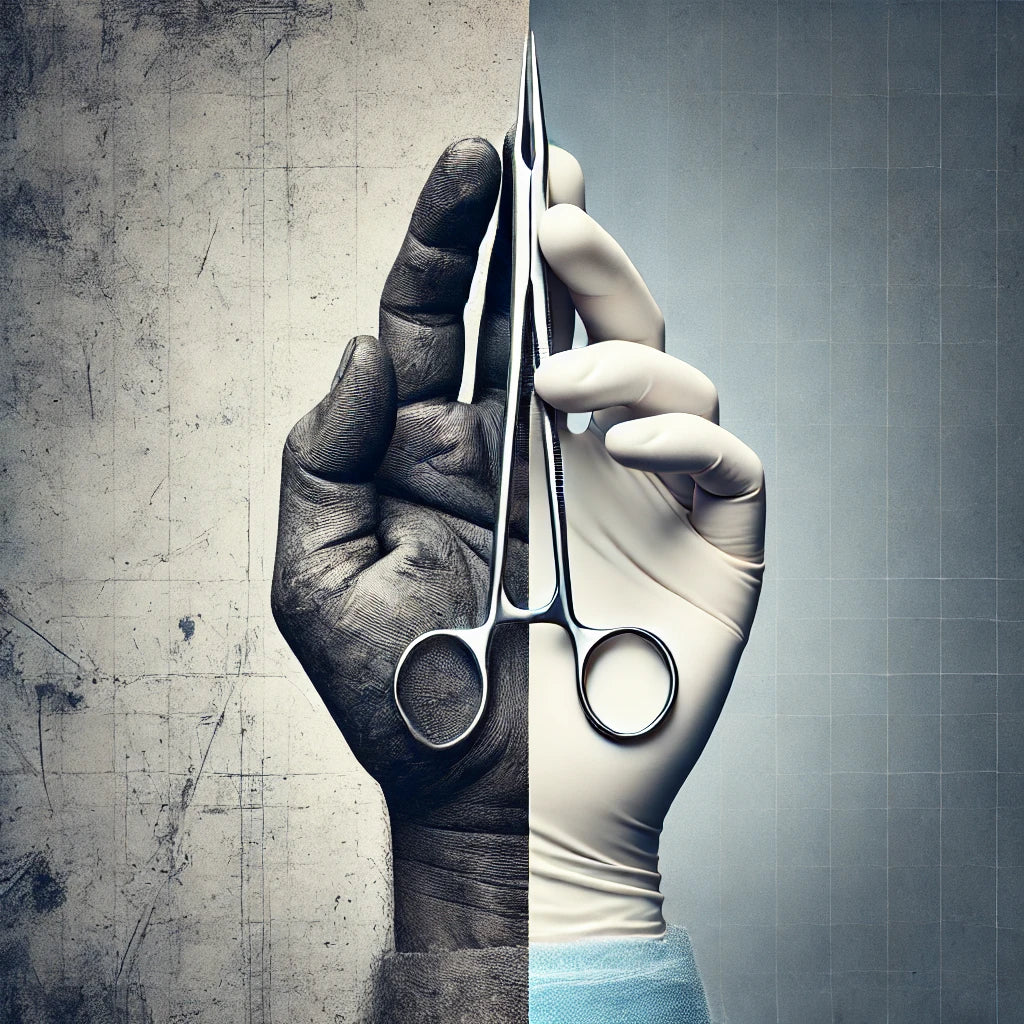The design and manufacturing process of Class I medical devices, particularly surgical instruments, combines precision engineering, skilled craftsmanship, and sustainability practices. Each step, much of it done by hand, reflects a commitment to quality, innovation, and environmental responsibility.
1. Initial Design: The Blueprint of Excellence
The process begins with the conceptualization of the instrument. Designs are crafted by hand or digitally, involving collaboration with surgeons, decontamination experts, engineers, and craftsmen to ensure the design aligns with clinical and operational needs.
2. Prototyping: From Concept to Reality
A 3D model of the instrument is created, either manually or using CAD software. Depending on the complexity, this stage can take hours or months. The prototype serves as a tangible representation of the design, allowing for refinement and adjustments before full-scale manufacturing begins.
3. Raw Material Selection and Verification: Ensuring Quality
The raw materials used in surgical instruments are verified to meet standards like BS 5194 and ISO 7153. This ensures consistency in performance, durability, and safety. While the copper sulfate test is not performed, other rigorous testing methods are employed to confirm the material’s suitability for its intended use.
Stainless steel forms the backbone of surgical instruments. Austenitic stainless steel, such as AISI 304, is used for instruments like cannulas and clamps due to its high ductility and non-magnetic properties. Martensitic stainless steel, known for its high strength and brittleness, is used for gripping instruments like forceps and cutting instruments like scissors and bone rongeurs. These materials are carefully selected based on their performance characteristics, such as corrosion resistance, hardness, and flexibility.
4. Forging and Machining: Shaping the Instrument
The steel is forged into shape using compressive forces, either manually or with automated hammers for bulk production. Machining processes like milling and lathing refine the instrument further, creating features such as serrations, grooves, and box joints. Advanced CNC systems with multi-axis capabilities ensure precision and consistency throughout the manufacturing process.
5. Heat Treatment: Enhancing Durability
Heat treatment processes play a vital role in improving the physical and mechanical properties of surgical instruments. Annealing softens the material, hardening increases its durability, and tempering provides toughness, ensuring the instruments can withstand the rigors of clinical use without compromising functionality.
6. Surface Treatment and Finishing
Surface treatments like electropolishing enhance the corrosion resistance of the instruments, creating a bright and smooth finish. Polishing and buffing techniques are used to achieve various surface appearances, from mirror-like finishes to matte textures. Passivation, which involves immersing the instruments in an acid bath, removes contaminants and restores their corrosion-resistant properties.
7. Sustainability in Manufacturing: A Commitment to the Future
Sustainability is a cornerstone of the manufacturing process. Our manufacturers utilize reusable energy sources and recycle raw materials and offcuts to minimize environmental impact. Regular supplier audits are conducted not only to ensure compliance but also to foster continuous improvement and support supplier development. This collaborative approach avoids coercion, focusing instead on long-term partnerships that benefit everyone involved.
8. Quality Assurance: The Final Check
Every instrument undergoes stringent quality checks to meet regulatory standards and customer requirements. Dimensional accuracy testing ensures the instruments meet exact specifications, while performance testing confirms their functionality under simulated conditions. Corrosion resistance is rigorously tested in accordance with BS 5194 and ISO 7153 standards. These quality assurance measures ensure that each instrument performs reliably in demanding clinical environments.
A Sustainable Legacy of Quality
The manufacturing process for surgical instruments is a delicate balance of art, science, and sustainability. By investing in high-quality reusable instruments, healthcare providers can reduce risks such as contamination, improve patient recovery times, and contribute to a more sustainable future.
